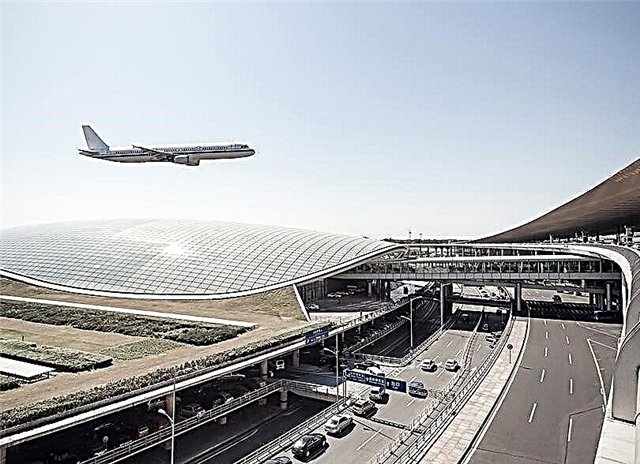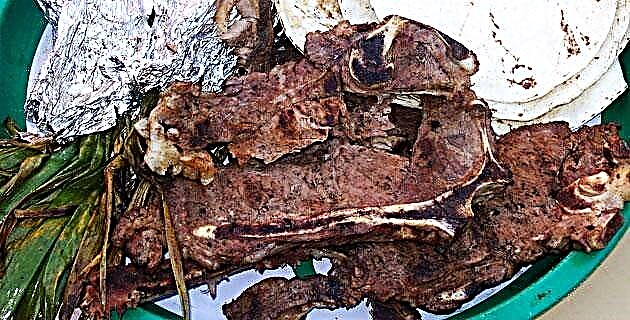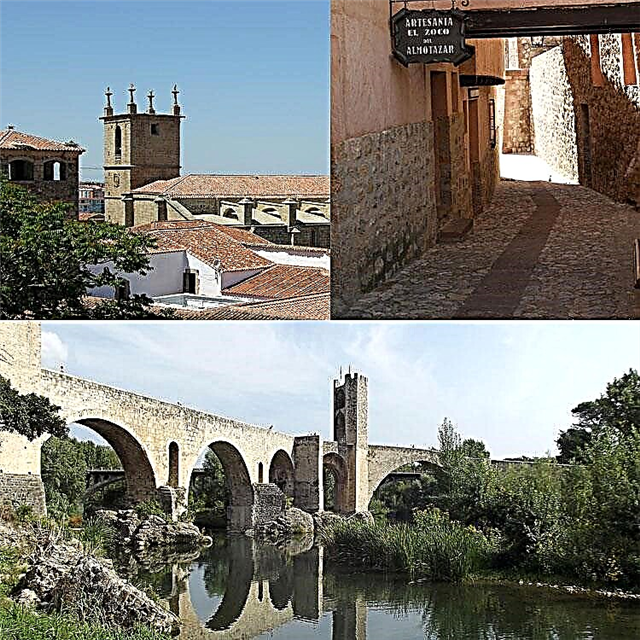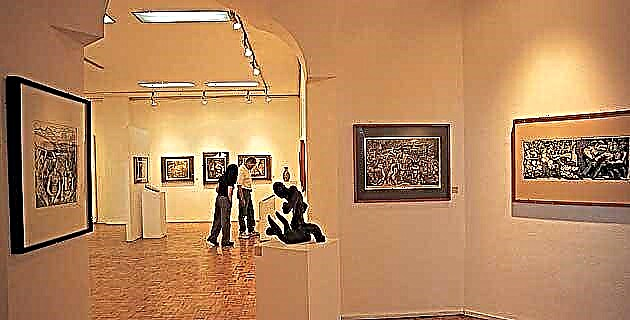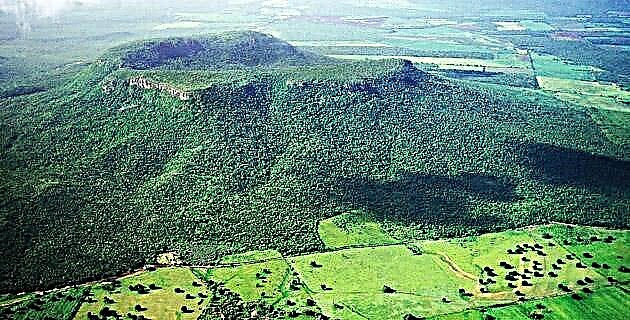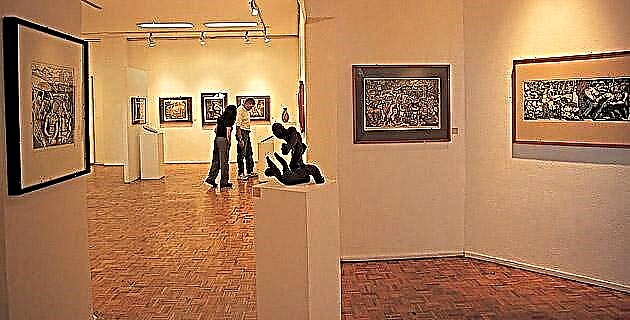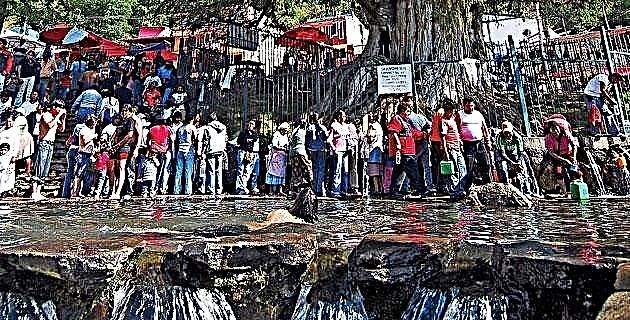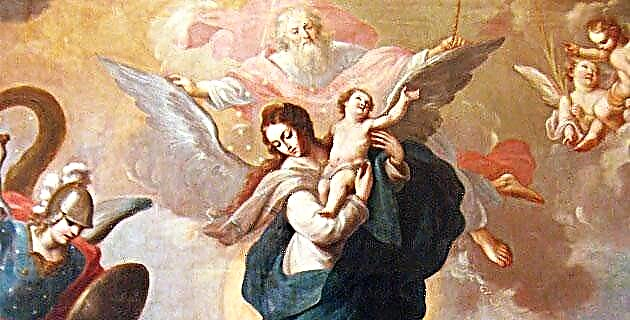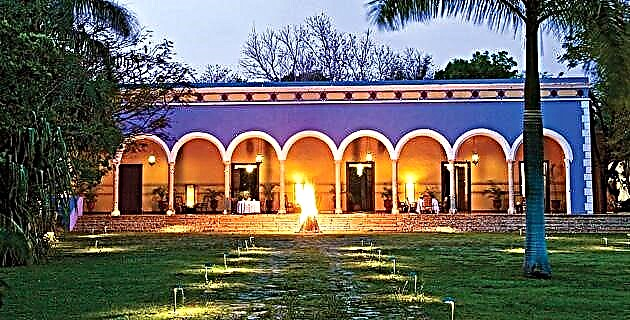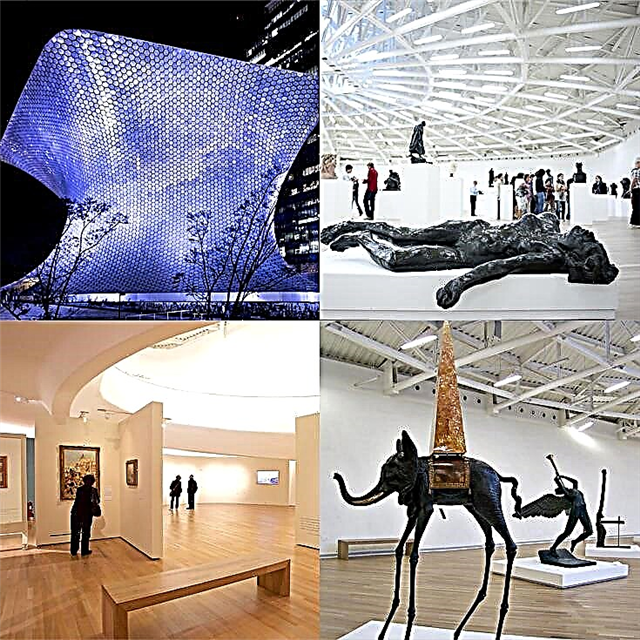The Soumaya Museum has become the great meeting point for art and culture in Mexico City, especially after the opening of its spectacular Plaza Carso venue. Here is everything you need to know about the museum.
What is the Soumaya Museum?

It is a non-profit cultural institution located in Mexico City, which exhibits the art and history collection of the Carlos Slim Foundation.
It is named after Doña Soumaya Domit, wife of Mexican magnate Carlos Slim Helú, who died in 1999.
Slim is one of the richest men in the world and the foundation that bears his name develops initiatives in the fields of health, education, culture, sports and many others.
The Soumaya Museum has two enclosures, one in Plaza Carso and the other in Plaza Loreto. The Plaza Carso headquarters has become an architectural icon of Mexico City due to its avant-garde design.
What is shown in Plaza Loreto?

The headquarters of the Museo Soumaya - Plaza Loreto was the first to open to the public, in 1994. The site is located in a property with history, since it was part of the commission granted to Hernán Cortés and seat of a wheat mill by Martín Cortés , son of the famous conqueror.
Since the 19th century, the plot housed the Loreto and Peña Pobre Paper Factory, which was destroyed by a fire in the 1980s, after which it was acquired by Carlos Slim's Grupo Carso.
The Museo Soumaya - Plaza Loreto has 5 rooms, dedicated to Mexican and Mesoamerican art and history. In rooms 3 and 4 an interesting collection of Mexican calendars is exhibited and room 3 is dedicated to the Mexico of the 19th century.
What does the Plaza Carso site offer?

The headquarters of the Museo Soumaya de Plaza Carso is located in Nuevo Polanco and it was inaugurated in 2011. Its bold design came off the drawing board of Mexican architect Fernando Romero.
Romero was advised by the British firm Ove Arup, author of the Sydney Opera House and the Beijing National Aquatics Center; and by Canadian architect Frank Gehry, winner of the 1989 Pritzker Prize, the "Nobel Prize for Architecture."
The Soumaya Museum - Plaza Carso has 6 rooms, of which 1, 2, 3, 4 and 6 are dedicated to permanent exhibitions and 5 to temporary exhibitions.
What are the main collections of the Soumaya Museum?

The collections of the Soumaya Museum are thematic and not chronological, distinguishing the samples of Old European masters, Auguste Rodin, Impressionism and Avant-gardes, Gibran Kahlil Gibran Collection, Mesoamerican Art, Old Novohispanic Masters, 19th Century Mexican Portrait, Independent Mexico Landscape and Art Mexican of the 20th century.
Other collections are referred to Devotional Stamp, Miniatures and Reliquaries; Coins, Medals and Banknotes from the 16th to the 20th centuries, Applied Arts; Fashion from the 18th to the 20th centuries, Photography; and Commercial Art of the Galas Printing Office of Mexico.
What are the Old European masters represented in the Soumaya Museum?

This collection makes a journey from Gothic to Neoclassical art, through Renaissance, Mannerism and Baroque, through the great Italian, Spanish, German, Flemish and French masters of the 15th and 18th centuries.
The Italians Sandro Botticelli, El Pinturicchio, Filippino Lippi, Giorgio Vasari, Andrea del Sarto, Tintoretto, Tiziano and El Veronés are represented among the main luminaries.
From the Spanish School there are works by El Greco, Bartolomé Murillo, José de Ribera, Alonso Sánchez Coello and Francisco Zurbarán, among some great masters.
Flemish art is present through the genius of Peter Brueghel, Peter Paul Rubens, Antón van Dyck, and Frans Hals. From Germany there are works by Lucas Cranach the Old and the Younger, and the French are present with Jean-Honoré Fragonard and Gustave Doré, among others.
How is the Rodin collection?

Outside of France there is no place that better represents the “father of modern sculpture” than the Soumaya Museum.
Auguste Rodin's most monumental work was Hell's Gate, with figures inspired by The Divine Comedyby Dante Alighieri; The flowers of Evilby Charles Baudelaire; Y Metamorphosisby Ovidio.
Rodin would not live to see his plaster casts turned into bronzes. Some bronze versions were made from their plaster originals, which are preserved in 6 countries, including Mexico, in the Soumaya Museum, through works such as The Thinker, The kiss Y The three shadows.
Another notable work by Rodin that houses the Soumaya Museum is the first model made by the Parisian artist for his remarkable work The burghers of Calais.
What is shown in the Impressionism and Avant-garde collection?

This exhibition is dedicated to the revolutionaries of art; those who broke with the currents in vogue through innovative proposals that were first the object of harsh criticism and even ridicule, to later become universal trends.
From Impressionism there are works by its great masters Claude Monet, Camille Pissarro, Pierre-Auguste Renoir, and Edgar Degas. Post-Impressionism is represented by Vincent van Gogh and Henri de Toulouse-Lautrec; and Fauvism by Georges Rouault, Raoul Dufy, and Maurice de Vlaminck.
From Cubism there is Picasso and from the Metaphysical School, Giorgio de Chirico. From Surrealism, the Soumaya Museum exhibits works by Max Ernst, Salvador Dalí and Joan Miró.
What about Gibran Kahlil Gibran?

Gibran Kahlil Gibran was a Lebanese poet, painter, novelist and essayist who died in 1931 in New York, at 48 years old. He was called the "poet of exile."
Don Carlos Slim is born in Mexico, of Lebanese descent, and it is not surprising that he has accumulated an important collection of the work of his illustrious countryman Gibran Kahlil Gibran.
The Soumaya Museum preserves the artist's personal collection, which includes objects, letters and manuscripts of The profit Y Crazy, Gibran's two most important literary works.
By Gibran Kahlil Gibran, the Soumaya Museum also keeps his death mask, as well as oil paintings and symbolist drawings.
What is the Mesoamerican Art collection like?

The Soumaya Museum displays works ceded to the institution through an agreement by the National Institute of Anthropology and History of Mexico, belonging to the pre-classic, classic and post-classic periods of pre-Columbian art in western Mesoamerica.
Masks, clay figurines, inscribed skulls, incense burners, censers, braziers and other pieces are exhibited.
The graphic and documentary work made by the Spanish cartoonist José Luciano Castañeda during the Royal Expedition of Antiquities of New Spain, carried out between 1805 and 1807, is also shown.
What is shown of the Old New Hispanic Masters?

This exhibition contains works by Juan Correa, the author of the painting Assumption of the Virgin which is in the Metropolitan Cathedral of Mexico City; of the Mexican Cristóbal de Villalpando; and the great New Spain master of the baroque, Miguel Cabrera, among others.
This space of the Soumaya Museum also houses paintings, sculptures and other pieces by anonymous New Spain artists, as well as works by artists from the other viceroyalties of the Kingdom of Spain that existed in America during the colonial era.
How is the exhibition on the Mexican Portrait of the XIX Century?

In this collection there are works made in Mexico by great portraitists from the prestigious Real Academia de San Carlos, such as the Catalan Pelegrín Clavé y Roqué, the Texcocano Felipe Santiago Gutiérrez and the Poblano Juan Cordero de Hoyos.
The portrait of pure regional identity is represented by José María Estrada and the popular work is symbolized by the Guanajuato Hermenegildo Bustos, with his paintings of notable psychological expression.
Finally, the genre of “Muerte Niña” is also present, dedicated to children who died at a young age, called “angels” in the Hispanic world.
What does the Independent Mexico Landscape have?

Shortly after Independence, notable painters arrived in Mexico who were fundamental to the development of the country's landscape school.
This list includes the names of great landscape painters such as the British Daniel Thomas Egerton, the American soldier and painter Conrad Wise Chapman, the French painter and pioneer of photography, Jean Baptiste Louis Gros; and the German Johann Moritz Rugendas, better known as Mauricio Rugendas.
These illustrious teachers inspired outstanding disciples, such as the Italian living in Mexico, Eugenio Landesio; Luis Coto y Maldonado from Toluca, and José María Velasco Gómez, from Cali.
These masters of landscaping are represented in the Museo Soumaya's Independent Mexico Landscape collection.
What is exposed of the Mexican Art of the 20th Century?

Influenced by the European avant-gardes and by the aspirations of Mexican society, the country's art exploded tremendously in the 20th century through monumental figures such as Murillo, Rivera, Orozco, Tamayo and Siqueiros.
The museum preserves two murals by Rufino Tamayo and a collection of self-portraits by Mexican artists that belonged to the Tamaulipas politician and diplomat Marte Rodolfo Gómez.
The collection also contains works by Günther Gerzso and José Luis Cuevas from Mexico, Juan Soriano from Guadalajara, José García Ocejo from Veracruz and Francisco Toledo and Sergio Hernández from Oaxaca.
What does the Devotional Stamp and the Miniatures and Reliquaries exhibit contain?

The art of printing developed between the 16th and early 19th centuries was fundamentally religious, with illustrators and printers such as Joseph de Nava, Manuel Villavicencio, Baltasar Troncoso and Ignacio Cumplido, who used intaglio, woodcut, etching and lithography techniques.
Another interesting artistic field of work was that of making miniatures and reliquaries with ivory supports, in which Antonio Tomasich y Haro, Francisco Morales, María de Jesús Ponce de Ibarrarán and Francisca Salazar stood out.
How is the collection of Coins, Medals and Banknotes from the 16th to the 20th centuries?

Most of the gold and silver extracted from the rich deposits of the Viceroyalty of New Spain during the colonial era was transferred to Spain in the form of ingots. However, several minting houses opened throughout Mexico, manufacturing coins, many of which are desired by private collectors and museums.
In the Soumaya Museum there is a valuable collection of coins that numismatically tell the history of Mexico, including the so-called Carlos and Juana, the first pieces minted in the American continent.
Likewise, there are exhibits of the first circular coins of the reign of Felipe V and the so-called "hairdressers" from the time of Carlos III.
Also, in the museum's heritage there are civil and military coins and medals from the time of the Second Mexican Empire and Republicans from the period of the French intervention.
What does the Applied Arts show include?

Until the period immediately prior to the Independence of Mexico, the Viceroyalty of New Spain was an American commercial crossroads between Europe and Asia.
During that time a wide variety of objects arrived in Mexico, such as spoons, bracelets, Viennese toiletry bags, kitchen utensils and other pieces that now make up the Applied Arts exhibition at the Soumaya Museum.
Among the most valuable objects are the collection of spoons of the German collector Ernesto Richheimer, a bracelet that belonged to the Empress Carlota of Mexico, wife of Maximiliano de Habsburgo, as well as furniture, music boxes, screens, watches and jewelry.
What's in the Fashion and Photography collections?

The museum offers a walk through world and Mexican fashion between the 18th and mid-20th centuries. You can admire garments made of brocades, damasks, silks, satins and velvets; dresses, men's suits, intimate apparel, jewelry and accessories.
In the attractive field of ritual and religious clothing, there are works with twisted threads, sequins, capes, braids, trousseau, and chalice covers, among others.
The photographic exhibition includes daguerreotypes, tintypes, platinotypes, collodions and albumins from the second half of the 19th century, as well as cameras, phototypes and portraits of the great figures until the middle of the 20th century.
What does the exhibition Arte Comercial de la Imprenta Galas de México refer to?

Galas de México was the main publisher of calendars and other commercial pieces for the Mexican and Latin American market, approximately between the 1930s and 1970s.
The artistic elaboration of the stickers was the joint work of painters, cartoonists, photographers and printers, reflected in historical, folkloric and humorous prints, landscapes and traditions, without forgetting sensual production.
The museum's collection includes prints, oil paintings, negatives and films made by the great architects of the time, as well as machinery, cameras and other objects.
What other activities does the museum carry out?

The Soumaya Museum develops a set of programs related to art, far beyond its exhibitions. These activities include workshops - such as "From such a stick to a splinter", aimed at parents of painters and their children - art confidences and concerts.
Among the services that the museum provides to its visitors are tactile tours for the blind and visually impaired, access to certified guide dogs, a sign language interpreter, and bicycle parking.
Where are the museum venues and what are their rates and hours?

The Plaza Loreto site is located on Avenida Revolución and Río Magdalena, Eje 10 Sur, Tizapán, San Ángel. It is open to the public every day, except Tuesday, from 10:30 AM to 6:30 PM (Saturdays until 8 PM). Visitors to Plaza Loreto can park at Calle Altamirano 46, Álvaro Obregón.
The Plaza Carso venue is on Bulevar Cervantes Saavedra, corner of Presa Falcón, Ampliación Granada and is open every day between 10:30 AM and 6:30 PM.
The entrance to the two enclosures of the Soumaya Museum is free.
We hope that your visit to the Soumaya Museum is very enjoyable and instructive, hoping that you can leave us a brief comment about this post and about your experience in these majestic spaces for art.
Mexico City guides
- The 30 Best Museums In Mexico City To Visit
- The 120 Things You Must Do In Mexico City

